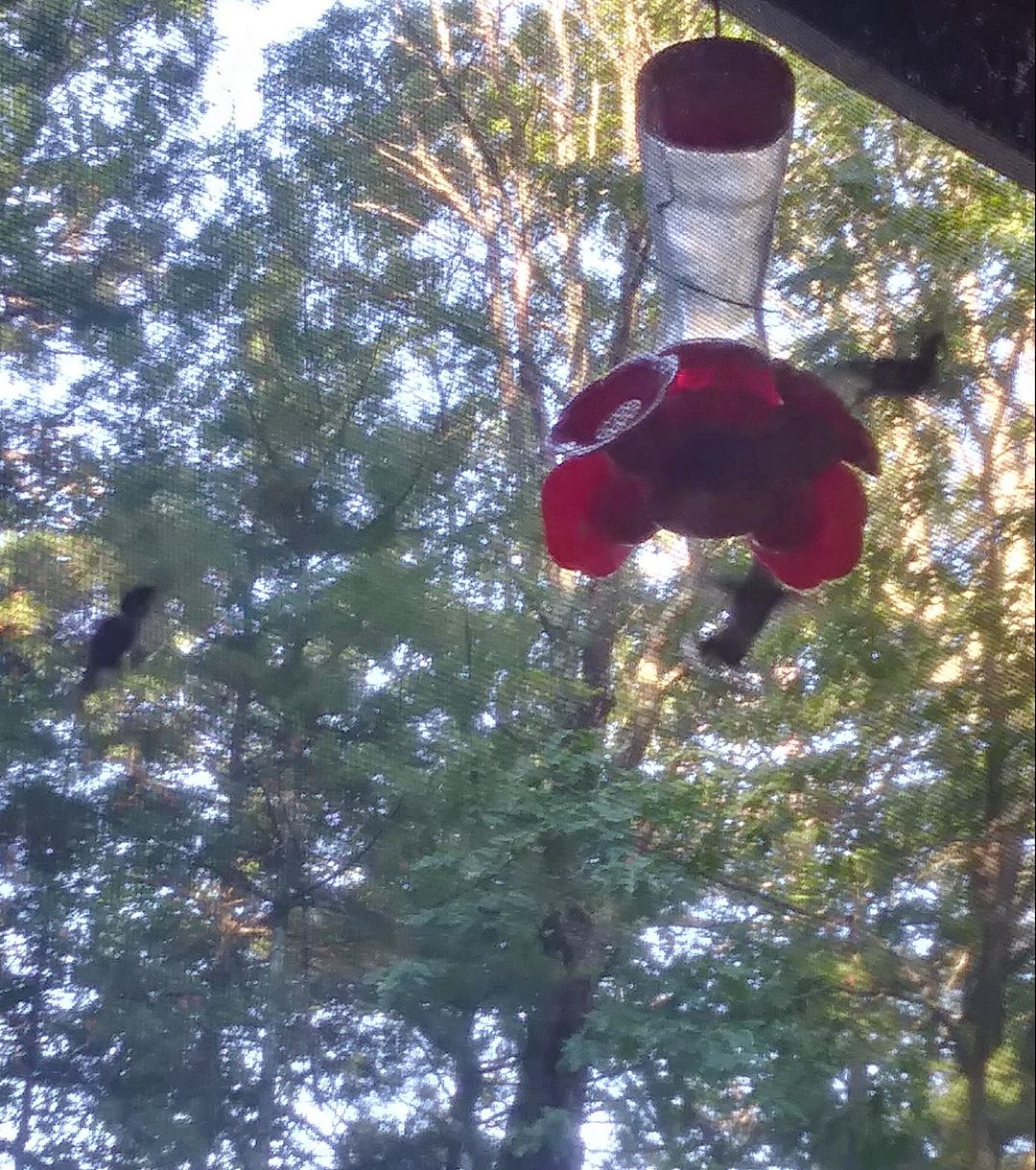JULY 10, 2020 – Yesterday, my wife hung a hummingbird feeder on each side of the porch of the Red Cabin. From nowhere appeared a flock of ruby-throated hummingbirds. Actually, the term is a “charm”—according to Decoda, Canadian-based organization promoting literacy (isn’t the internet a wonderful thing?). As I write, four members of a charm are humming up a storm on the other side of the screen next to my chair. They’re so loud I can barely concentrate. Imagine model airplanes buzzing inside your ears. Besides the buzzing, caused by wings beating at an average rate of 80 times per second in hovering mode, hummingbirds produce a chirping sound by wagging their tails.
As to “the numbers,” this miniature bird is all about staggering stats: it weighs no more than .21 ounces, less than half the weight of a drinking straw. To migrate, however, from their breeding territory (eastern half of the U.S.) to Mexico and Central America, ruby-throated hummingbirds double their weight to fuel the 500-mile crossing over the Gulf of Mexico. Simply to sustain their normal weight and metabolism, hummingbirds consume twice their weight in daily fare.
To power their wings for hovering and other aerobatics, the hummingbird heart beats 1,260 times a minute. I couldn’t imagine this, so I divided by 60 to reach 21 times per second. That calculation took my breath away.
The above stats are only half the story of nature’s avian aeronautical wonder. The other half is the hummingbird’s unique wing-to-fuselage attachment, resembling more an insect’s than that of any other kind of bird.
These miraculous creatures have an average lifespan of five (males) to seven years (females); the oldest banded hummingbird reached nine years.
As we’re learning from the show outside our porch, these little creatures are as feisty as the bald eagles we observed recently fighting among themselves. Call it territorial. Just minutes ago, one hummingbird buzzed at a feeder. Soon a second hummingbird joined, then a third, then . . . all hell broke loose when a fourth buzzed in. If the evening dragonflies and damselflies over the dock provide the visual effects of a WWI dogfight, the hummingbird display by the porch provides all the sound effects.
When our feeders aren’t full, where do all the hummingbirds go? Wildflowers throughout the forest. As romantic as that sounds, it’s hard work, a never resolving obsession—as it is with the rest of wild creatures. It’s no alliterative wonder that a feeding frenzy unfolds when the feeders are filled. In human terms, it’s like a group of cave dwellers being introduced to Old Country Buffet.
Imagine the scene:
“Hey Gus!” says cave man Stan to his buddy. “Chuck your stones and spear—we’re gonna wild-boar out! Just look at them slabs of beef and gravy! Gotta gorge while the gorgin’’s good!”
“I’m goin’ for the wings,” says Gus.
“Wings?” says Stan. “A pair ’o them and me and you could fly like hummingbirds!”
“Well, not quite,” says Gus. “These here wings are chicken wings.”
(Remember to subscribe to this blog and receive notifications of new posts by email.)
© 2020 by Eric Nilsson
